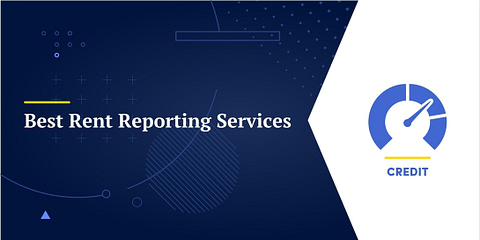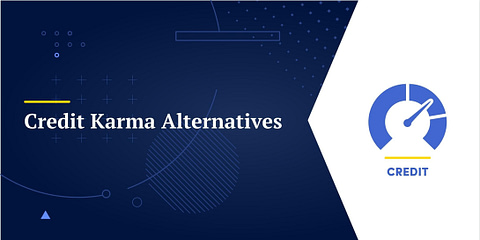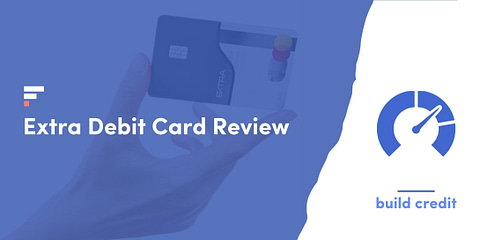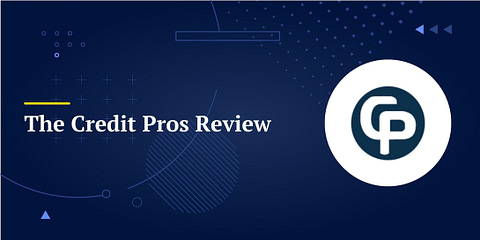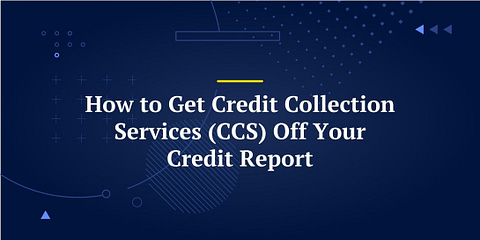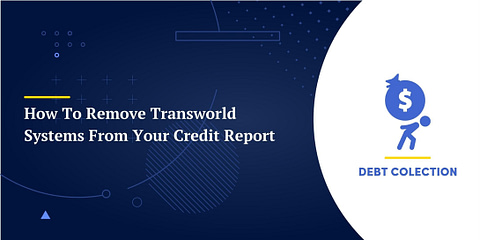On the surface, credit scores seem pretty simple.
They’re a numerical indicator of your reliability as a borrower, used by lenders to determine the terms of a loan.
A good score is high, and a bad score is low.
But when you start to learn how those scores are calculated – and how many companies are doing the calculating – things get a little more complicated.
There are multiple credit scoring models, each with its own algorithm for determining the score assigned to consumers.
The FICO score is the score most often used by lenders, but even FICO offers multiple scoring algorithms, and your FICO score from each credit bureau could be different!
Here’s what you need to know – how the scores are calculated, what constitutes a high score, and why your score matters.
What is a FICO Score?
A FICO score is a credit score calculated by the Fair Isaac Corporation. Bill Fair and Earl Isaac, the founders of FICO, wanted an impartial way to evaluate borrowers before lending them money.
Before the FICO score came about in 1989, there were several basic credit bureaus in operation. These companies tracked whether or not consumers paid their bills on time, but they weren’t as accurate or unbiased as today’s data-based systems.
At one point, your credit report could even include information about your political preferences and other intimate details.
🤔 90% of lenders use FICO credit scores for underwriting decisions rather than the VantageScore you get from most free credit score providers.
Nowadays, the FICO score is a sophisticated piece of financial technology that lenders rely on to evaluate creditworthiness and assign interest rates. The FICO score is the most popular option for lenders.
When you check your credit score for free through a third-party service, you’re often seeing your VantageScore credit score and not your FICO score. There are still many ways to get a free credit score from FICO.
You have more than one FICO score. FICO provides general purpose scores, and also specialized scores like the FICO Auto Score, widely used by auto lenders, and the FICO Bancard Score, used by credit card companies. Each score has several versions, and lenders may continue to use older versions after the newer ones are released.
Not all lenders report to all credit bureaus, so there can also be differences in your FICO score depending on which credit report it was based on.
How FICO Scores Change
There are multiple iterations of FICO scores, with slight discrepancies between each of them. You can get your 28 FICO scores here.
Approximately every five years, FICO updates its scoring models to create an algorithm that more accurately reflects how responsible consumers are. Factors that may have seemed significant at one point may be disregarded, while others may be deemed more important.
When FICO creates a new general-purpose scoring algorithm, it can take several years before lenders start using it. For example, FICO 9 was released in 2014, but FICO 8 is still the version most commonly used by lenders. Many mortgage lenders use even older versions when approving borrowers.
Understanding FICO Scores
Did you know lenders pull different FICO scores when you apply for a car loan vs a home loan? And yet another for credit cards? And the scores can vary (a LOT!) Learn more about all types of credit scores in this guide.
FICO’s latest scoring model, FICO 10, was released in 2020, but has not been widely adopted by lenders. FICO 8 remains the most widely used credit score. However, the Federal Housing Finance Agency (FHFA) has selected the FICO 10T score as its preferred variant, which will increase the use of this score in Mortgage lending.
FICO score updates can have a small update on your credit score, depending on the update and what’s already on your report. For example, unpaid medical bills sent to collections have a lesser impact on credit scores using the FICO 9 model.
If you had an unpaid medical collection, then this update would benefit you.
What Makes Up the FICO Credit Score?
Even though there are slight differences between various FICO models, the main tenets remain the same. The FICO credit score is made up of the following factors:
- Payment history: 35%
- Credit utilization: 30%
- Length of credit history: 15%
- Recent applications: 10%
- Credit mix: 10%
If you want to improve your FICO score, pay your bills on time, watch how much available credit is left on your credit cards, and avoid opening new accounts unless you really need them.
Be aware that it can take time for your credit score to improve, especially if you have serious negative entries like a bankruptcy or collection accounts on your credit report.
What is the FICO Credit Score Range?
Most FICO credit scores range from 300 to 850. Some scores designed for auto lenders and credit card companies use a range between 250 to 900.
Here is the general FICO credit score range:
- Poor: Less than 580
- Fair: Between 581 and 669
- Good: Between 670 and 739
- Very Good: 740 and 799
- Excellent: 800 and more
People with better credit scores are offered better interest rates and terms on loans, credit cards, and even car insurance.
The range you fall into as a borrower can mean a difference between thousands of dollars in interest over the life of a loan. If you’re buying a house, a good credit score can save you tens of thousands.
Conventional mortgages usually require a score of 620 or higher. If you have a credit score below 580, you won’t even be able to qualify for an FHA mortgage unless you have a 10% down payment.
Many high-paying rewards or travel credit cards are only available to those with scores of 700 or higher.
Credit scores can also be used for non-lending purposes. In some cases, utility companies may require a deposit for account holders with a low score.
Some careers and specific positions require a credit check during the application process, especially those dealing with some level of financial responsibility.
The military can even use a low credit score as grounds for revoking security clearance.
O Scores?
Now let’s quickly discuss how Experian, Equifax, and TransUnion (the big 3 credit reporting companies) fit into your FICO scores.
In our food metaphor, FICO was our master chef.
The big 3 credit bureaus have the ingredients (all your credit history that makes up your credit file).
How do they get this info about you? Various entities may furnish credit information to the credit bureaus, such as banks, debt collectors, loan companies, and other creditors.
But here’s the thing.
Sometimes these entities only report your credit activity to one or two of the credit bureaus, so the ingredients that make up your score could be different at Experian than it is at, say, TransUnion.
FICO then comes in and overlays its unique credit scoring model on top of the information at the credit bureaus (which, again, may be different). This results in… you guessed it… three separate credit scores, which often do not match.
Notice these real scores provided by my brother, Mark. In some scoring models (like the Auto Scores), they differ by more than 50 points.
TransUnion FICO Scores

Experian FICO Scores

Equifax FICO Scores

That’s why you hear people ask why their TransUnion score is different than their Experian score.
You see, the chef (FICO) prepared the scores like always, but it was the ingredients that were different!
Types of FICO® Scores
FICO offers scores for general use as well as industry-specific scores such as auto scores. Today there are more than 20 different FICO scores being used to asses people’s creditworthiness.
The most widely used general credit score today is FICO 8. If you are applying for a personal loan, a student loan, a credit card, or any type of retail credit, this is the credit score you need to know.
Industry-specific scores are particularly skewed towards helping lenders in a specific industry calculate the risk that a borrower will default on their particular loan product.
Auto lenders, credit card companies, and mortgage lenders mostly use FICO industry-specific scores. These are called:
- FICO Auto Scores
- FICO Bankcard Scores
- and FICO Mortgage Scores
FICO Auto Scores will give more weight to auto loan and lease payment history, while Bankcard scores weigh credit card and personal loan activity more heavily.
Types of FICO® Credit Scores
Here’s a list of the most important FICO scores you should know and monitor, along with their credit score ranges. They are the credit scores most lenders use.
🌐 Most Widely Used Version: FICO 8
Score Range: 300 – 850
🏠 Used in Mortgage Lending: Beacon 5.0 from Equifax, FICO-II from Experian, and FICO Classic 04 from TransUnion
Score Range: 300 – 850
🚗 Used in Auto Lending: FICO Auto Score 2, 4, 5, 8
Score Range: 250 – 900
💳 Used in Credit Card Decisions: FICO Bankcard Score 2, 3, 4, 5, 8
Score Range (2, 4, 5, 8): 250 – 900
Score Range (3): 300 – 850
📰 Newest Versions: FICO 9, 10, 10 T
Score Range: 300 – 850
Key: All scores above that contain a 5 are exclusive to Equifax. Scores with a 2 are exclusively from Experian. Scores with a 4 are exclusively from Transunion.
Please note: Many people have three separate scores for FICO 8, 9, 10, 10 T, along with FICO Bankcard Score 8 and FICO Auto Score 8. FICO derives one score from each of the big three credit bureaus, Experian, TransUnion, and Equifax. FICO Bankcard Score 3 is exclusive to Experian.
Click here to learn more about FICO Scores.
Remember how we said that your FICO score could vary depending on which credit bureau you get your credit report from? As you can see in the table below, not all credit bureaus use the same FICO scores.
Here is what credit scores are used by each of the 3 major credit bureaus:
| EXPERIAN | EQUIFAX | TRANSUNION | |
|---|---|---|---|
| Most widely used version | FICO® Score 8 | FICO® Score 8 | FICO® Score 8 |
| Versions used in auto lending | FICO® Auto Score 8 FICO® Auto Score 2 | FICO® Auto Score 8 FICO® Auto Score 5 | FICO® Auto Score 8 FICO® Auto Score 4 |
| Versions used in credit card decisioning | FICO® Bankcard Score 8 FICO® Score 3 FICO® Bankcard Score 2 | FICO® Bankcard Score 8 FICO® Bankcard Score 5 | FICO® Bankcard Score 8 FICO® Bankcard Score 4 |
| Versions used in mortgage lending | FICO® Score 2 | FICO® Score 5 | FICO® Score 4 |
| Newly released version | FICO® Score 9 FICO® Auto Score 9 FICO® Bankcard Score 9 | FICO® Score 9 FICO® Auto Score 9 FICO® Bankcard Score 9 | FICO® Score 9 FICO® Auto Score 9 FICO® Bankcard Score 9 |
Ranges for All FICO Scores
Many people assume the FICO score range is from 300 to 850 across the board, but the reality is that is the range for less than half of all FICO scores.
350 – 850: Mortgage & General Score Ranges (10 Scores)
Your FICO score will range between 300 to 850 for all of the general scores, such as FICO 8 and 9 as well as your mortgage scores (FICO 2, 4, and 5).
FICO 3 also has a range of 350 to 850, although it is mostly used for credit cards.
250 – 900: Auto & Bankcard Scores (18 Scores)
FICO assigns a different scoring range
Where Can I Find My FICO Credit Score?
Finding your FICO credit score is harder than finding a credit score from VantageScore. Most free sites, including Credit Karma and Credit Sesame, only show your VantageScore.
Discover Bank has a free credit score service that will show your FICO 8 score, even if you’re not a Discover customer. You just have to register for an account and provide some personal information, like your Social Security number and address.
You can also purchase your score directly from myFICO for $19.95 a month. This provides access to a monthly updated FICO credit score, as well as a credit report and basic credit monitoring.
Tracking your FICO score is useful for consumers looking to buy a house or take out another major loan. Once you have a FICO score in the “very good” or “excellent” range, you can confidently begin the lending process.
If you’re interested in viewing your credit score, click here to get all 28 credit scores with this tool and learn how to improve your score.


